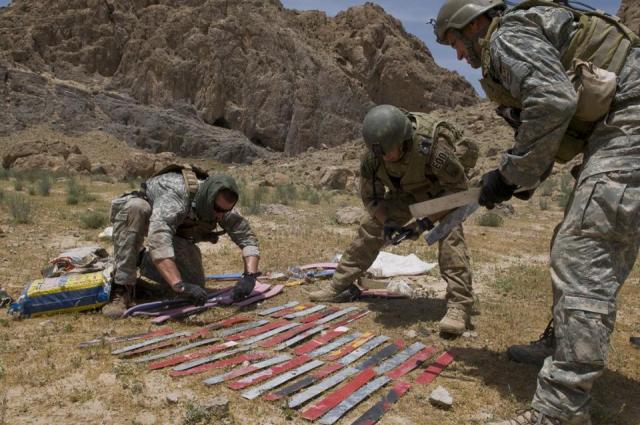Soldiers say there’s lower barriers and better access to behavioral health care in theater, even though for many there’s been an increase in time spent outside the wire.
The assessment of Soldier opinion on behavioral health care was revealed May 19, 2011, with the release of the Joint Mental Health Advisory Team VII survey.
The J-MHAT 7 survey operated inside Afghanistan, consulting with both Soldiers and Marines in land combat forces between July and August 2010. About 911 surveys were collected from 40 different Army maneuver unit platoons, and some 335 surveys were collected from 13 Marine Corps platoons. Additionally, 85 surveys were collected from behavioral health specialists in theater.
“The report released today reflects a snapshot of the psychological health of Soldiers and Marines deployed last summer, said Lt. Gen. Eric B. Schoomaker, Army surgeon general and commander of the U.S. Army Medical Command, during a press event that coincided with the release of the study. “It also reflects a practice of looking hard at ourselves and our behavioral healthcare-delivery system in theater in a disciplined and systematic fashion.”
Schoomaker said that in MHAT 6, released in 2009, Soldiers had reported “high barriers” to care and the Army responded with an increase in behavioral health practitioners. Today the Army maintains a staffing ratio of one behavioral health practitioner for every 700-800 Soldiers.
A priority for Army leadership is eliminating the stigma associated with seeking mental health assistance. The J-MHAT 7 report says about half of Soldiers said they “would be seen as weak” for seeking such services. The number didn’t change from the 2009 report.
The report also says that Soldiers are reporting “significantly higher” rates of acute stress than what was reported in 2009 or in 2005. However, the report also shows that medication use for mental health or combat stress was at 3.7 percent for Soldiers — a slightly lower rate of use than what is seen among the civilian population with similar demographics.
In Afghanistan, the report shows “dramatic increase” in combat exposure for Soldiers surveyed, as compared to 2009 — in fact, combat levels are higher than what was reported in past MHAT reports for either theater.
Schoomaker also said Soldiers reported a high exposure to events that cause concussions. However, the report shows low percentages for Soldiers that sought evaluation for those concussions. The general did say the Army has taken steps to correct that.
“Since this survey was conducted, we have fully implemented mandatory concussion evaluation and management protocols in theater,” he said. “Recent reports suggest better compliance with timely and appropriate concussion management.”
Also a key finding in the survey: Soldiers in combat reported a decline in individual morale, Schoomaker said.
An issue discovered by MHAT 7 researches included the effects on sleep deprivation on warfighters. Reports showed Soldiers cited night operations and environment as two contributing factors for lack of sleep.
“Sleep deprivation in an operational and combat environment is contributory to our behavioral health issues,” Schoomaker said. “We’ve always known in the military — and the Army in particular has led with a lot of the studies and insights into what sleep deprivation does to the human brain. It mars our judgment, it changes out mood and it contributes to fratricide on the battlefield.”
Schoomaker said that issues like sleep deprivation, morale and elimination of stigma associated with seeking mental health assistance comes down to leadership in the smallest units.
“Soldiers do what their small unit leaders teach them to do — lead by example and doing,” he said. “That includes aggressive treatment of concussions (and) lowering of stigma associated with seeking help for behavioral health problems.”










